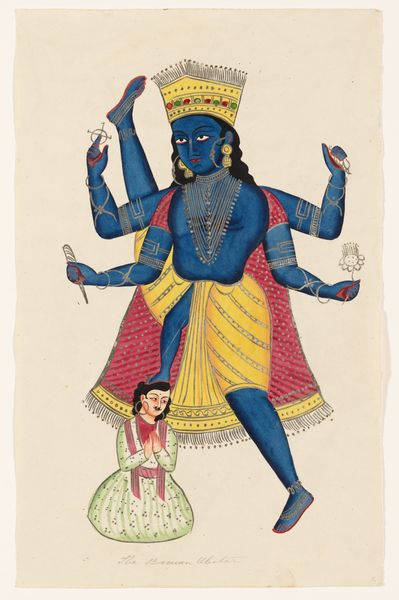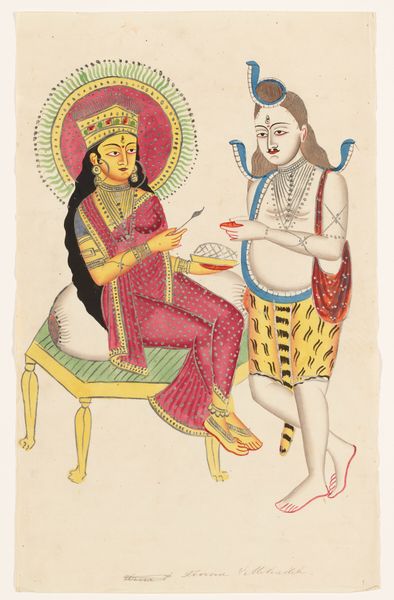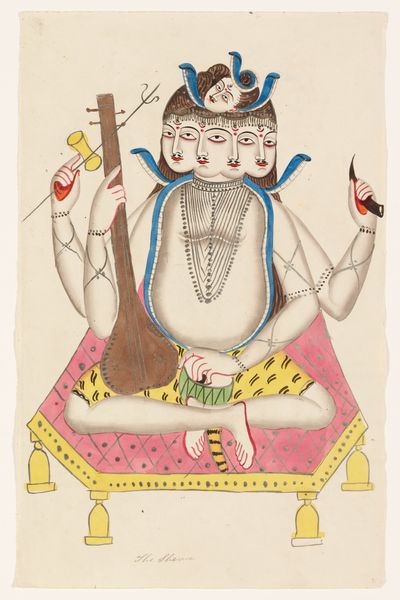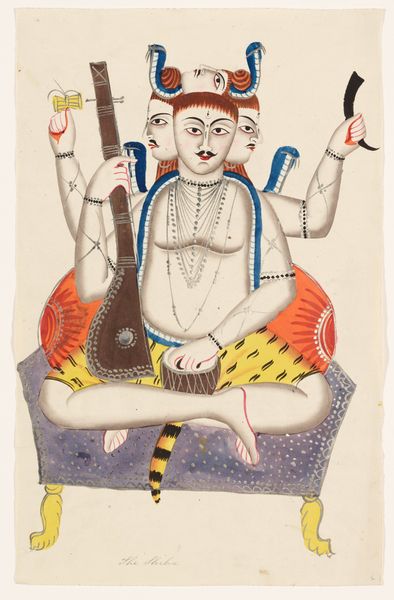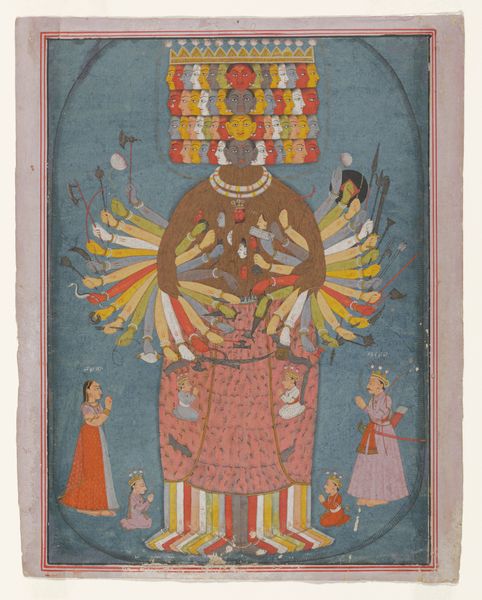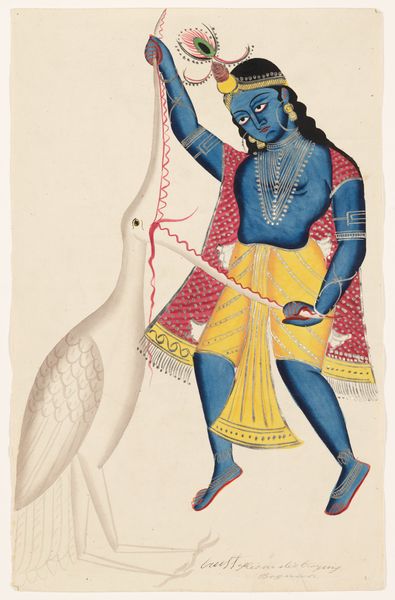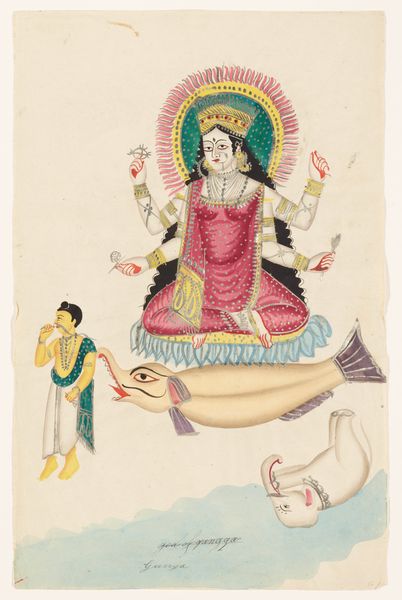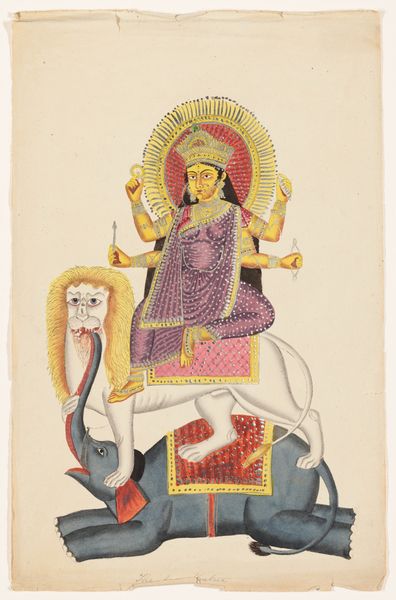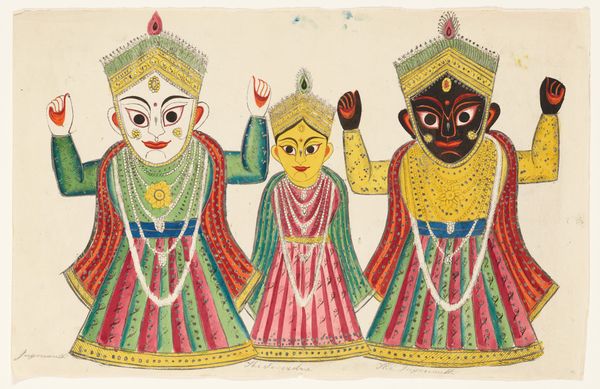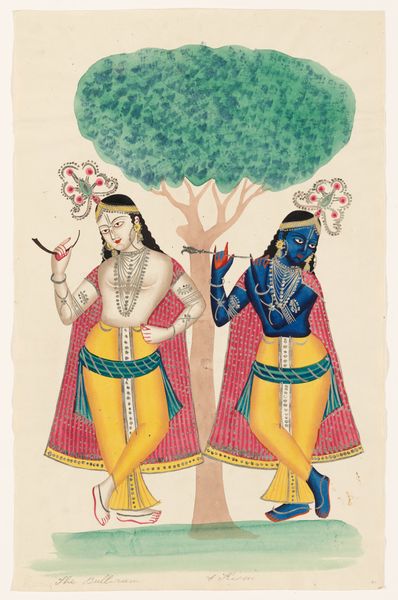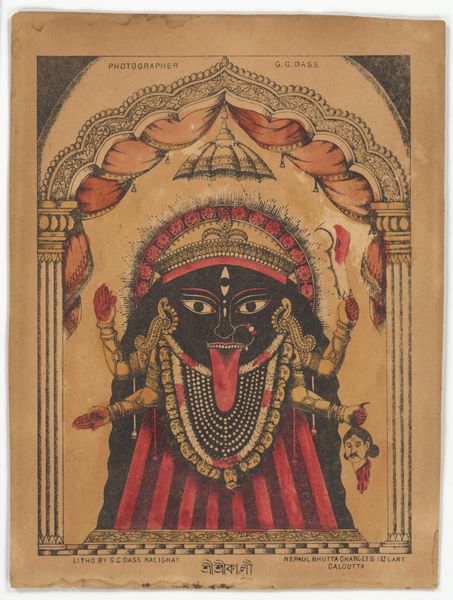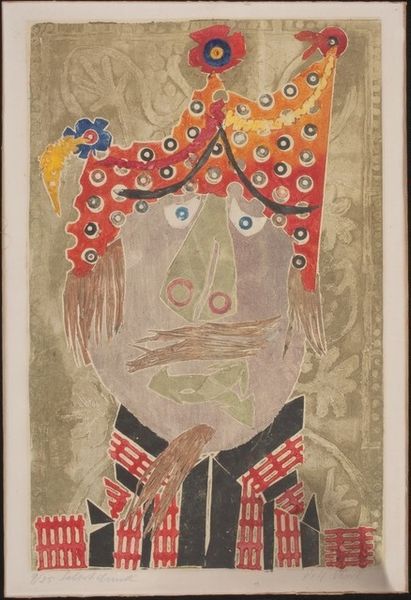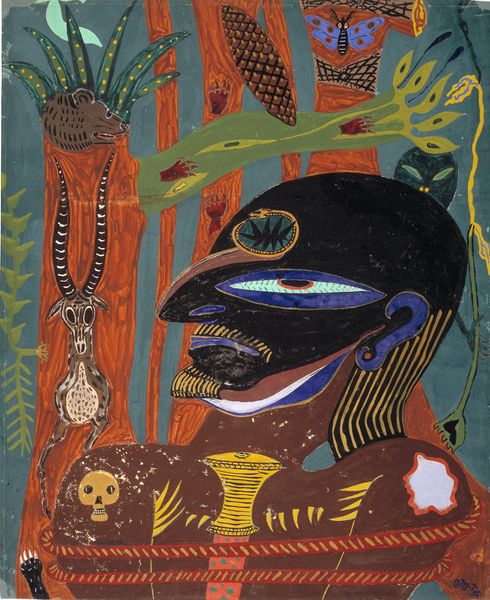
painting, watercolor
#
painting
#
asian-art
#
figuration
#
watercolor
#
watercolour illustration
#
miniature
#
erotic-art
Dimensions: 17 11/16 x 11 in. (45 x 28 cm)
Copyright: Public Domain
Curator: This watercolour painting, believed to have been created between 1854 and 1855, presents us with an arresting image of Kali Trampling Upon Shiva. It's currently part of the collection at the Minneapolis Institute of Art. Editor: My immediate response is one of raw, visceral energy. The dynamism of Kali’s pose, combined with the colour palette, creates an effect that is both startling and powerful. I'm also drawn to the figure below her; what appears to be a supine Shiva. The overall composition, the tension between stasis and action, is quite compelling. Curator: Absolutely. This image speaks volumes about power dynamics, particularly concerning gender. Kali, a fierce and powerful goddess, is often depicted in art as a symbol of female strength and agency. She stands upon Shiva, her consort, which challenges traditional patriarchal structures. We might consider what it meant to portray deities in this manner, what role this image might have played in colonial Indian society, and for whom. Editor: It’s fascinating how the artist uses contrasting colors to highlight that power. The dark blue of Kali, contrasted against the paler colors of Shiva's figure, and then offset by the patterned backdrop. It amplifies the visual hierarchy. Furthermore, notice the detail in Kali’s adornments—the necklaces, the garland of skulls—all adding to a complex symbolic system. It calls to mind a linguistic structure, signifiers building toward layers of meaning. Curator: Precisely! We can't ignore the transgressive elements: Kali’s association with death and destruction challenges notions of femininity often linked with creation and nurture. The severed head, held aloft by Kali, speaks to both death and liberation from the ego, all potent visual reminders of the cyclical nature of existence and her power to overcome temporal bounds. Editor: Ultimately, what remains with me is the way form serves the emotional depth and theoretical layers. It is an illustration where structure functions as its message. Curator: Agreed. It is this intertwining of structure and deeper meaning which positions it as such a compelling artwork within a broader understanding of cultural representation.
Comments
minneapolisinstituteofart almost 2 years ago
⋮
Once, when the world was threatened by a demon who could not be killed by any male being, human or divine, the gods imbued Parvati (Uma) with their powers. She became Kali, the wrathful, and quickly defeated the demon. But she did not stop there. Instead, she kept on dancing, threatening to destroy all life. Unable to stop her through brute force, her lover Shiva lay down in front of her, allowing her to trample his body, ending her rampage.
Join the conversation
Join millions of artists and users on Artera today and experience the ultimate creative platform.
